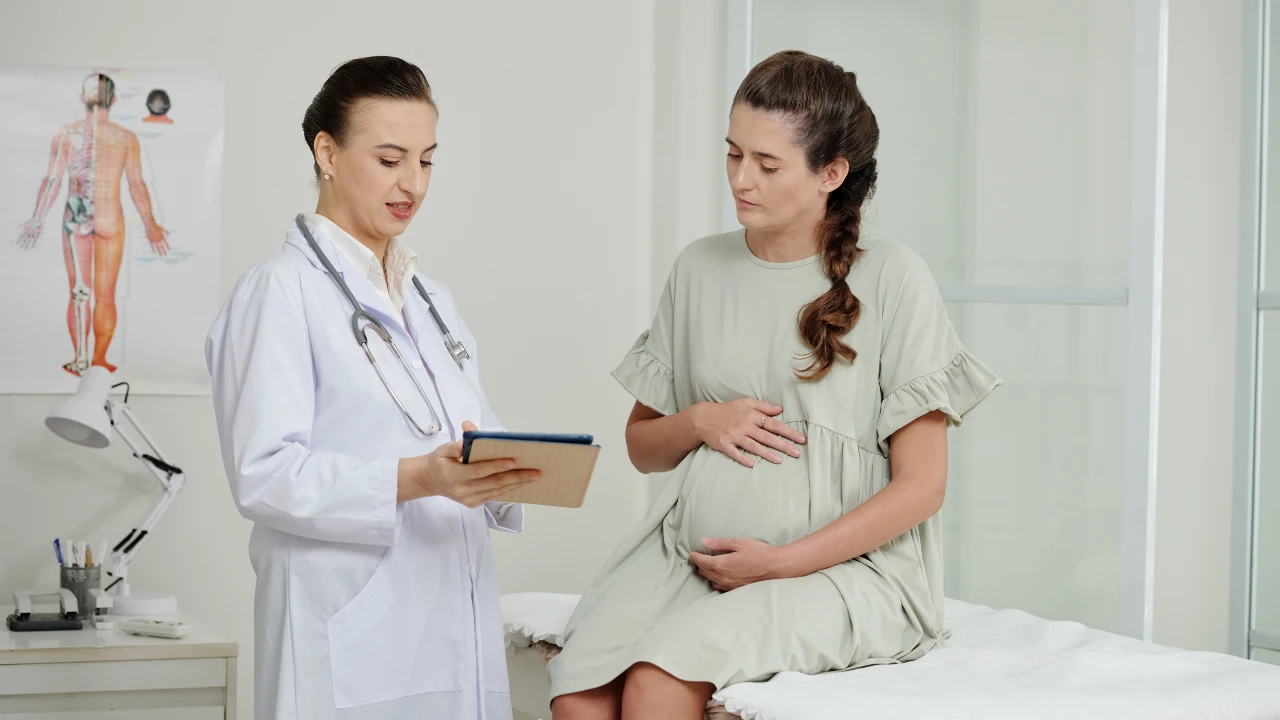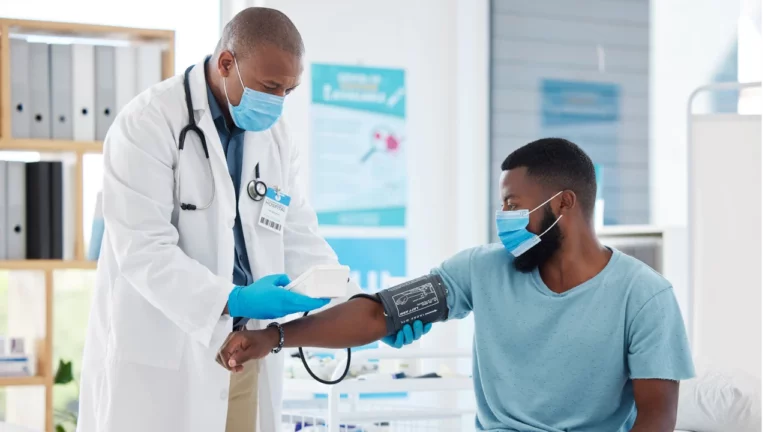Remote Patient Monitoring (RPM) has increasingly become a cornerstone of modern healthcare, offering a dynamic approach to managing patient health outside of traditional clinical settings. Particularly in the field of obstetrics, RPM has introduced transformative ways to support pregnancies through technology, improving outcomes for both mothers and babies. This blog explores the numerous benefits and applications of RPM in pregnancy, detailing how it’s shaping the future of maternal health.
The Role of Remote Patient Monitoring in Modern Obstetrics
Home monitoring systems has established itself as a vital tool in modern obstetrics, particularly for managing high-risk pregnancies like hypertension during pregnancy. In a significant study led by Rebecca D. Jones, published in the Cardiovascular Digital Health Journal (June 2024), researchers demonstrated how cellular-enabled RPM devices, supported by a 24/7 nurse call center, can effectively monitor pregnant women with hypertension, leading to reduced stress levels, high patient satisfaction, and fewer hospitalizations. The study found that RPM could reduce the rate of hospital admissions for pregnancy-related hypertension by up to 30% This study underscores the potential of RPM to not only improve health outcomes but also enhance the overall pregnancy experience by providing continuous, real-time health monitoring.
The research highlighted that participants using the RPM system experienced significant benefits, including lower emergency department visits and a notable decrease in perceived stress. These outcomes illustrate the efficacy of RPM in offering a proactive healthcare approach, particularly beneficial in rural or underserved areas where access to healthcare is limited. By empowering patients to manage their conditions with real-time data and professional support, RPM stands out as a transformative solution in prenatal care, ensuring safer pregnancies and promoting maternal and neonatal health.
Improving Access and Reducing Barriers
The American College of Obstetricians and Gynecologists (ACOG) highlights the significant role of RPM in addressing the accessibility challenges faced by pregnant women in remote or underserved areas. Home monitoring through RPM reduces the need for in-person healthcare visits is particularly valuable amid the rising shortage of obstetric care providers in rural regions. This reduction is crucial not only for maintaining continuous patient care but also for easing the burden on healthcare facilities, enhancing patient safety by minimizing travel and exposure risks, especially important during health crises like the COVID-19 pandemic.
ACOG’s advocacy for RPM is part of a broader call to action aimed at integrating more robust telehealth solutions across state healthcare policies. By increasing the availability of durable medical equipment (DME) and enhancing remote healthcare services, ACOG seeks to ensure that high-quality care remains uninterrupted and accessible. This approach includes urging state officials to expand coverage for telehealth services and to equalize the reimbursement rates for remote consultations to those of in-person visits. Such measures are designed to support the effective implementation of RPM, ensuring robust Telehealth Cybersecurity, thereby fostering better maternal and fetal health outcomes and reducing the overall strain on healthcare systems.
Enhancing Patient Engagement Through Remote Monitoring
RPM significantly enhances patient engagement in prenatal care, particularly vital for managing conditions like hypertension in pregnancy. The Maternal Child Health Journal (2023) reported that using cellular-enabled RPM devices led to measurable improvements in patient engagement and stress management. Specifically, participants experienced a decrease in stress levels with mean scores indicating lower anxiety and stress, which correlates to enhanced adherence to medical advice.
Moreover, the study highlighted that RPM technology not only reduced the need for frequent clinic visits but also empowered pregnant women through digital patient engagement by providing them with real-time health data. This increased accessibility and continuous monitoring encouraged a proactive approach to health management, with participants noting a significant improvement in their ability to manage their condition effectively. Such advancements in remote monitoring and remote patient management are proving essential in improving healthcare outcomes by making patient care more efficient and responsive
Enhancing Fertility Management Through RPM
In a thesis, Thatcher Florence Fernandez explores how RPM can revolutionize fertility management from preconception through postpartum. Fernandez outlines the persistent gaps in traditional fertility treatments—such as the lack of continuous, personalized care—and proposes RPM as a solution that can bridge these gaps. By leveraging RPM technologies, healthcare providers can offer real-time, continuous support and monitoring through Disease Management Protocols, significantly enhancing patient engagement and intervention efficacy. This approach not only helps in overcoming geographical and logistical barriers but also fosters a more informed and reassured patient experience throughout the challenging journey of fertility treatments.
Supporting High-Risk Pregnancies with RPM
RPM has proven particularly effective in supporting high-risk pregnancies complicated by hypertensive disorders of pregnancy (HDP), as evidenced by several studies. In her 2022 dissertation at the University of California, Los Angeles, Leah Maurine Spiro reported that pregnancies affected by HDP account for significantly higher postpartum readmissions—2.5-4.6% compared to just 1% in normotensive patients. Remarkably, 60% of these readmissions occur within the first week postpartum, highlighting the critical need for effective postpartum care and monitoring.
Spiro’s study demonstrated impressive patient engagement with RPM: a 72% consent rate and 100% adherence to program specifications among the participants. Satisfaction was notably high, with 93.6% of participants expressing satisfaction in post-study surveys. Furthermore, there were no readmissions recorded among the participants, suggesting that RPM can play a substantial role in reducing hospital visits and enhancing postpartum care.
This comprehensive approach to managing HDP via RPM not only minimizes the risk of cardiovascular complications but also standardizes care to improve overall patient outcomes. These findings advocate for the broader implementation of RPM in managing hypertensive disorders during the postpartum period, offering a feasible strategy to alleviate healthcare burdens and improve maternal health.
Integration, Support, and Reimbursement for Maternal Health Remote Patient Monitoring
Chronic Care Management through RPM offers significant benefits to maternal healthcare by enhancing the efficiency of care delivery and patient engagement. RPM empowers healthcare providers to improve patient interaction, better manage prenatal conditions, and gain timely insights into patient health while reducing the need for physical office visits. This is especially beneficial in managing high-risk pregnancies and extending care to underserved areas.
Integration and policy support for RPM is crucial for enhancing access and efficiency in healthcare, especially in managing high-risk conditions such as hypertensive disorders post-pregnancy. The Center for Connected Health Policy (CCHP) provides comprehensive data showing a substantial policy framework supporting RPM. According to their findings, fifty states and Washington D.C. offer some level of Medicaid reimbursement for RPM, with varying stipulations on provider type, patient location, and type of technology used. This variability underscores the need for a nuanced understanding of each state’s policy to fully harness RPM’s benefits.
From a financial perspective, RPM provides a substantial return on investment, increasingly recognized by insurers. For instance, Medicare’s reimbursement model for RPM effective January 1, 2024, includes several structured payments that highlight the financial benefits of integrating RPM into maternal healthcare. Initially, Medicare offers approximately $19 for enrolling a patient and setting up the device. Monthly payments include around $46 for monitoring data transmission and device management. Additionally, there is a payment of about $48 for at least 20 minutes of monthly communication regarding patient data and care adjustments. If the communication exceeds 40 minutes but is less than 60 minutes, an extra $38 is added.
Overall, a practice can be reimbursed approximately $94 per patient per month through Medicare, with the potential to reach around $170 depending on the extent of care and communication. This structured reimbursement model encourages healthcare providers to integrate RPM into their practice, promising better maternal and fetal health outcomes and more manageable healthcare costs.
DrKumo’s Role in Advancing RPM in Pregnancy
DrKumo’s advanced technology solutions and Remote Patient Monitoring are instrumental in the effective implementation of RPM in pregnancy. Their platform is designed to enhance patient care through real-time monitoring, which is vital for managing high-risk pregnancies and ensuring the well-being of both mother and child. By integrating artificial intelligence & machine learning (AI/ML) capabilities and providing seamless data transmission through secure, HIPAA-compliant channels, DrKumo ensures that healthcare providers can access and analyze patient data efficiently. This continuous monitoring is essential for early detection of complications, timely interventions, and reducing the need for frequent in-person visits, which is particularly beneficial for patients in remote or underserved areas.
DrKumo’s platform supports a wide range of medical peripherals for remote medical monitoring, including blood pressure monitors, glucometers, pulse oximeters, and weighing scales, all integrated with their Intelligent Cloud Service. This integration of many platforms allows healthcare providers to receive and organize physiological data in real-time, creating a comprehensive picture of the patient’s health status. DrKumo’s technology empowers patients to manage their health confidently at home, preventing cross-infection, addressing hospital overcapacity issues, and maintaining hospital readiness.
These capabilities are crucial in modern obstetrics, where continuous fetal monitoring and timely intervention can significantly improve maternal and neonatal outcomes, making DrKumo an essential partner in advancing RPM in pregnancy.
Takeaways
Remote Patient Monitoring (RPM) represents a transformative approach in managing pregnancy, particularly for high-risk conditions. The integration of RPM in prenatal and postpartum pregnancy care not only improves health outcomes but also enhances patient engagement, reduces stress, and decreases the need for frequent hospital visits.
Studies have consistently shown the benefits of RPM, from lowering the rates of hospital admissions to increasing patient satisfaction and compliance with medical advice. As the healthcare landscape evolves, the role of RPM in maternal health continues to expand, offering a promising solution to the challenges faced by pregnant women and healthcare providers alike.
As RPM technology continues to evolve and integrate deeper into healthcare systems, its role in enhancing maternal and neonatal health outcomes is undeniable. With strong support from healthcare policies and continuous advancements in technology, RPM is set to transform the future of prenatal care.
Contact DrKumo today to start leveraging their innovative technology for enhancing pregnancy care and improving maternal health outcomes.
Disclaimer: The information provided in this blog is for educational purposes only and should not be considered medical advice. Always consult with a healthcare professional for medical concerns and treatment options.








